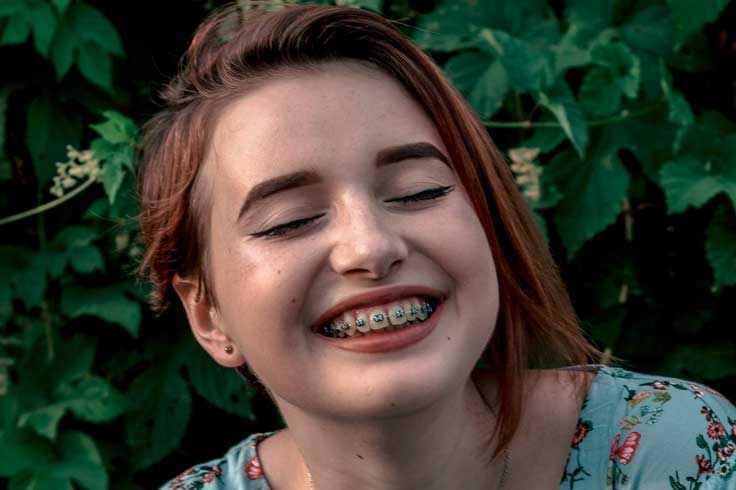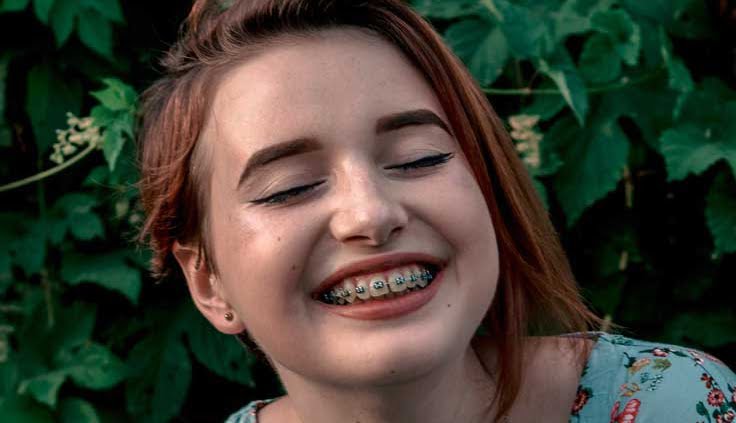Everything You Need to Know About Dental Braces (Orthodontics)

WHAT ARE ORTHODONTICS?
Orthodontics is a specialty of dentistry focusing on arranging teeth in a straight line. Orthodontics aims to make people’s oral health and smile better. We often visit dentists to clean our teeth or for problems and complications such as gum problems and cavities. However, if you have specific irregularities, an orthodontist may help you get your teeth straight. If you have irregularities, your teeth will become hard to clean and they will be exposed to decay and diseases.
So what Irregularities Can Orthodontists Fix?
Your orthodontist can treat many problems including malocclusions which include the following problems.
1. Underbite:
It happens when the teeth of the lower jaw extend outwards over the teeth of the upper jaw.
2. Overbite:
It happens when the teeth of the upper jaw extend too far over the teeth of the lower jaw.
3. Crossbite:
It happens when a tooth (or teeth) becomes closer to the cheeks or the tongue than its antagonist in the upper or lower jaw.
4. Protrusion of the Teeth of the Upper Jaw:
It happens either when the teeth of the upper jaw protrude outward too far or when the teeth of the lower jaw don’t protrude outward enough.
5. Crowding:
It happens when the teeth can’t erupt because there isn’t enough room.
6. Spacing:
It happens either when there are wide gaps between the teeth or when there are some missing teeth.
7. Openbite:
The overlap between the upper and lower front teeth doesn’t exist. When you close your mouth, the teeth aren’t aligned properly.
8. Dental Midline Mismatch:
The back teeth aren’t aligned properly.
• Types Of Dental Braces:
There are many types of dental braces.
1. Traditional or Metal Braces:
Traditional braces are the most common. They used to be heavier in both weight and structure. However, modern braces are lighter than the old ones.
These braces are manufactured with high-quality stainless steel. They have metal brackets attached to each one of your teeth using a certain type of cement and these brackets are connected together using a thin archwire. This archwire makes your teeth move slowly until they are in the correct position by putting pressure over your teeth.
The brackets and the archwires are connected together by ligatures or O-rings which are very small elastics. Each time you pay your orthodontist a visit, these ligatures are removed and changed to make the braces tight.
Self-ligating braces are traditional braces that don’t require ligatures.
• Pros: Colored bands for your kids. Least expensive type of braces.
• Cons: Noticeable.
2. Ceramic Braces:
Ceramic braces are like traditional braces. However, the brackets aren’t metal; they are ceramic. This ceramic material is transparent and clear which makes these braces less visible than the other types. They are the perfect and most popular choice for adults.
These braces might leave marks on the teeth because its elastics lose their colors. These marks are prevented through providing your teeth with the necessary fluoride to protect them against any cavities and/or marks.
• Pros: Less noticeable than traditional braces. More efficient and faster in arranging teeth.
• Cons: More expensive than traditional teeth. They may leave marks if you didn’t care for them properly.
3. Damon Braces:
These braces are currently the most popular. They don’t require as many visits to your orthodontist as other types and they provide their users with the gentlest types of treatment. They are self-ligating using a self-adjusting slide mechanism instead of traditional elastics to link the archwires together.
Your teeth will be able to move without any kind of adjustment; that is why you will see results faster. Also, the pressure produced on the teeth is less than the other types; that is why it is kind of painless.
They are easy to clean so you don’t have to pay your orthodontist many visits; that is why it saves both money and time.
• Pros: Compact, easier to clean, require few dental visits, and produce less pain.
• Cons:Very expensive compared to other types of braces.
4. Clear & Removable Aligners (Invisalign):
Invisalign is a transparent, clear aligner involving a range of custom-made clear plastic aligners that look like mouth guards. Invisalign is removed so that you can eat and clean it. You replace them every two weeks for new braces. Each new one is adjusted to fit for your own teeth according to the new positions of your teeth.
They aren’t recommended as the primary treatment. They are the best way for ongoing use after finishing your orthodontic treatment. They maintain the results until you feel that your teeth won’t move again.
• Pros: Invisible and you can eat and drink whatever you want.
• Cons: Less effective and won’t work properly if the problem is serious. Expensive and easily lost. Not suitable for kids.
5. Forsus Appliances:
According to the American Association of Orthodontists, when your kid is 7 years old, you should get him/her checked by an orthodontist to make sure that his/her teeth are growing properly.
Forsus appliances are recommended for kids who have difficult overbites. They are better than headgear for braces and used more often nowadays.
It’s a spiral spring placed inside the mouth (the cheeks) and connected to the braces to adjust the position of the upper and/or the lower jaw.
6. Lingual Braces:
Traditional braces are placed on the front of the teeth while lingual braces are placed on the back of the teeth. They are completely invisible; that is why they are the number one choice for people whose appearance is important and must look perfect all the time.
It is the best choice for many adults. They are also the best option for people who play wind instruments or any sport because they adjust themselves and are more adaptable than other types of braces.
They are custom-made and require special equipment to place them; that is why they aren’t available at many dental clinics. They are also more expensive.
• Pros: Completely Invisible.
• Cons: Difficult to clean, more expensive than other types of braces, very uncomfortable at the beginning, adjusted difficulty, and take more time than traditional braces.
7. Palatal Expanders:
If you have overcrowding teeth, there are two options for your problem. The first option is tooth extraction and it isn’t available anymore. The second option is wearing a palatal expander for a while. Palatal expanders are placed on the palate putting pressure on the back of the upper molars. This pressure moves the teeth and expands the palate.
After wearing a palatal expander for a while, your teeth can be corrected using regular braces.
8. Retainers:
Retainers aren’t dental braces; that is a fact. We mention them because they are so important after getting your braces off. They keep your teeth in their place once you remove your braces instead of moving your teeth.
• Pros: You place them all the time for a while then you only wear them at night. If you chose fixed retainers, you will even forget that they are there.
• Cons: If you removed your braces without wearing retainers, your teeth might move again after all these efforts.
• What Should You Do before Getting Braces?
Your teeth should be sufficiently clean before getting braces. Otherwise, your orthodontist will clean them before placing the braces, especially if they are traditional braces.
The best thing to do to get your teeth ready for braces is to schedule an appointment for professional cleaning several days before placing your braces. Keep brushing, flossing, and gargling until your braces appointment.
These steps will help you to get your braces faster instead of letting your orthodontist do all the work.
Also, How Can You Brush and Floss with Braces?
Flossing your teeth is already a difficult task. It becomes more difficult with braces. You have to floss your teeth daily and the braces make it difficult to clean certain spots. Any kind of elastics, bands, or any parts that can be removed should be removed before brushing your teeth. Brush the archwires and your teeth well then rinse.
Notice that while flossing, waxed floss is the best and they don’t get trapped and shredded under and within your braces. Be careful while threading it beneath the main wire and floss your teeth gently. Remove it and repeat again to floss again another set of teeth.
But What If My Braces Becomes Loose?
If you have loose braces, don’t worry at all. Your orthodontist can handle the situation according to the condition of your braces. It is easy and doesn’t take time to tighten them again.
• The Conclusion:
Once your kids reach 7 years old, it’s recommended see a general dentist or an orthodontist to determine whether their teeth need braces or not.
If you live in Zirakpur or Chandigarh and considering dental braces or orthodontic work, we provide our patients with the ultimate care. We examine your teeth and give you a list of the options you have.



Leave a Reply
Want to join the discussion?Feel free to contribute!